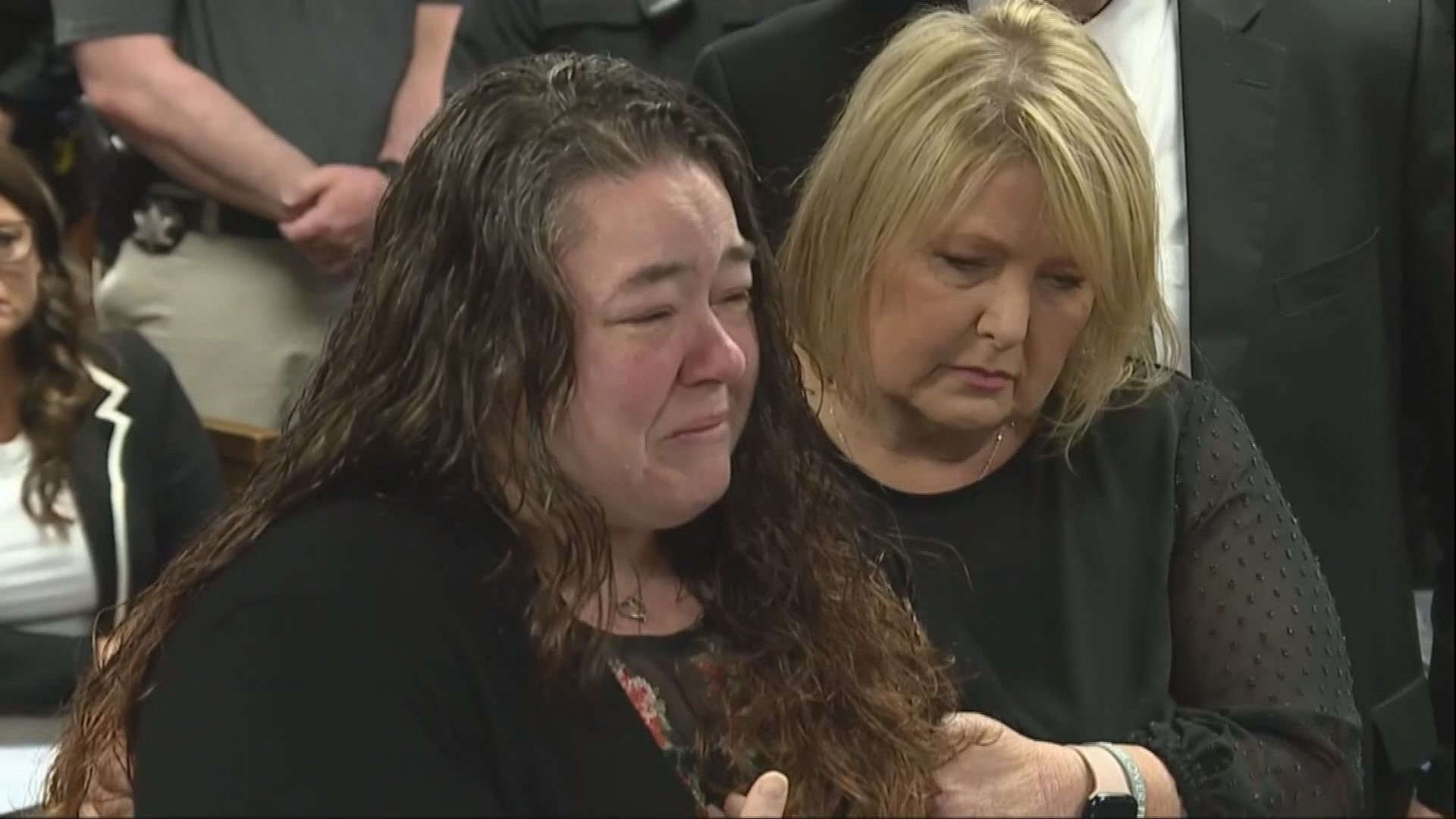EAST LANSING, Mich. - Interim Michigan State University President John Engler initiated the process of firing William Strampel in February.
Actually firing Strampel, the former Michigan State University College of Osteopathic Medicine dean and Larry Nassar's former boss, could take until early 2019.
The process is lengthy because Strampel has tenure, a permanent academic appointment typically revoked only in extreme circumstances.
In the meantime, he is expected to continue collecting the $217,903 salary, along with benefits, that he earns as a faculty member. He was making $412,000 a year as dean of the college prior to stepping down from that position and going on medical leave in December of 2017.
"At this time we do not expect any changes to his salary," MSU spokesperson Emily Guerrant wrote in an email. "If his status, once returning from medical leave, is changed, then it’s possible that his pay would change as well."
A February letter from Carol Viventi, vice president and special counsel to the President to Provost June Youatt contended that the former dean failed to “monitor and enforce clinical practice guidelines put in place for former doctor Larry Nassar following the conclusion of a 2014 sexual harassment investigation.”
Strampel also was arraigned last month on charges of felony misconduct in office, fourth-degree criminal sexual conduct and two additional misdemeanors. He’s accused of groping a former student as well as making sexually inappropriate comments and appearing to offer favorable treatment in exchange for sex acts. Pornographic images, some of which appeared to be selfies from MSU students, were also found by investigators on his computer.
On Wednesday, the Michigan Attorney General's Office moved to admit new evidence of Strampel's alleged sexual misconduct, evidence brought forward by two women after the initial charges were announced.
Through his attorney last month, Strampel denied inappropriately touching anyone, making comments about exchanging favorable treatment of sexual favors or having romantic or sexual relationships with any medical students.
Strampel and his attorney, John Dakmak, did not respond to messages seeking comment on whether Strampel intends to fight MSU's efforts to fire him.
Strampelhas the option of resigning or retiring as the tenure revocation process plays out, the latter option ensuring he would receive post-retirement healthcare benefits.
"I am aware of no procedure we have for terminating benefits of retirees," Terry Curry, associate provost and associate vice president for academic human resources, wrote in an email.
Related:
- Former MSU students say William Strampel had a history of lewd behavior
- Court records: Former MSU dean William Strampel sexually harassed students, had pornography on university computer
MSU officials declined to comment on where the process of attempting to revoke Strampel's tenure stands.
“We are not able to provide specific information about pending personnel actions,” officials from Communications and Brand Strategy wrote in an unsigned email last month. "However, we are following the process as outlined in the policy."
If the process plays out in full, this is what it will look like:
After the proposal to initiate dismissal proceedings, a faculty member serving as a Dismissal for Cause Review Officer reviews the case and drafts a confidential report and recommendation to the provost within 30 days.
Assuming the provost opts to start formal proceedings, the president and the chair of the University Committee on Faculty Tenure would be notified of the allegations against Strampel as well as any witnesses and the testimony they’re expected to provide.
A hearing normally would be scheduled within 21 days of Strampel being notified of the charges against him. Whether or not Strampel attends, evidence would be presented and witnesses questions, per MSU's policy.
The Hearing Committee would then vote on whether a cause for dismissal was established. If yes, a recommendation for dismissal or another punishment would be made. If not, the case is closed. A written report with an explanation of the decision would follow within 30 days.
If Strampel were to appeal, he'd have to do so within 15 days of receiving the Hearing Committee's report. After getting a written response from both sides, an appeal panel would have up to 10 days to decide whether the conclusion of the Hearing Committee was flawed. At the extreme end, the appeal panel could rule that a new Hearing Committee be appointed.
After appeals, Engler would then have up to 15 days to review the Hearing Committee's final report and make written comments. Another 15-day window then opens for any other involved parties to comment. Engler would then be tasked with issuing a final report another 15 days after all comments are submitted.
If the Hearing Committee or Engler recommended dismissing Strampel, relevant documents would then go to the Board of Trustees for a vote at their next meeting.
The last time the board voted to revoke a faculty member’s tenure was in September of 2016, Curry said. Going after a faculty member's tenure is rare and often ends with the faculty member in question resigning or retiring rather than going through the entire process.
“Given that we have more than 5,500 faculty and academic staff, there certainly are people in various stages of the disciplinary process, whether for performance or behavior issues," Curry said. "There are not a lot of cases where behavior is serious enough to warrant dismissal.”
Spontaneous retirement or resignation are a major reason why it’s hard to say how common efforts to remove tenured faculty are, said Hans-Joerg Tiede, association secretary for the American Association of University Professors’ Department of Academic Freedom, Tenure and Governance.
Around once or twice a month, his organization is notified of a pending case and is occasionally asked to observe. It's likely far from all of the cases happening across the country.
"Going through the full process beginning to end rather than resigning is not common as far as I can tell," Tiede said.
The AAUP looks to ensure that the administration has the burden of proving a faculty member did wrong, among other things. While not every case warrants public disclosure, he said, universities such as MSU may feel it’s prudent to do if there is significant public interest in the case.
Just a few years ago, MSU’s process for getting rid of tenured faculty was much more prone to deliberate delay, said Debra Nails, a professor emerita and former chair of the University Committee on Academic Governance.
Beginning during the 2013-14 school year, faculty members began drafting a revised policy that combined previously separate policies on discipline and dismissal into a unified policy.
“We stipulated accommodations, including alternative means of communication, so someone could not just say, ‘I can’t make the hearing,’” Nails said, including using Skype to call in. “They couldn’t really postpone proceedings indefinitely in the same way you could before.”
Another improvement was preventing accused faculty from filing a lawsuit to delay the university’s process. Previously, such suits would need to be resolved before the university's process could proceed.
Nails takes issue with the way interim President Engler handled the announcement of efforts to revoke Strampel’s tenure. It isn’t that he can’t say it’s happening, Nails said, but rather his statement announcing the move, which read, in part, “We are sending an unmistakable message today that we will remove employees who do not treat students, faculty, staff, or anyone else in our community in an appropriate manner.”
That statement, Nails said, “Creates a conflict of interest where university committee members tasked with following the dismissal process could be viewed as working for the president of the university and the Board of Trustees."
Contact RJ Wolcott at (517) 377-1026 or rwolcott@lsj.com. Follow him on Twitter @wolcottr.



